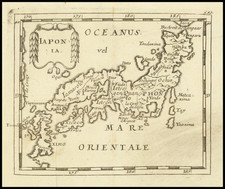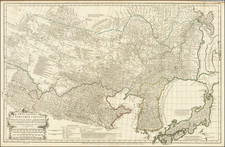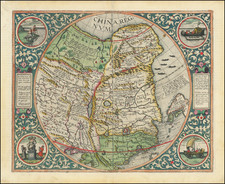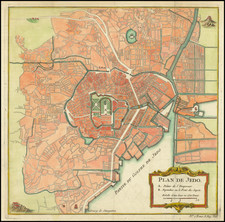A very rare map historically depicting Japan as it appeared 600 A.D., from Franz Philip von Siebold's epic work on Japan.
This fascinating map shows Japan in a historcally retrospective fashion, as the country appeared in 600 A.D. During this time Japan was in the middle of the Asuka Period (538-710 A.D.), a time of transformative change when many of the fundamental cultural foundations of Japanese society were established. Buddism was introduced to Japan in 538 and the period saw the arrival of migrants from Korea who brought with them sophisticated Korean and Chinese customs which were absorbed into the evolving Japanese culture. Moreover, the influence of Chinese learning increased as Japan began to send a series of official imperial embassies to (Tang Dynasty) China for the first time.
Here Japan is shown to occupy on the southern half of the modern country, everything from the middle of Honshu southwards. The borderlands of civilization end in a vast wilderness, beyond that which live the Ainu peoples, who lived independently of the Wajin (ethnically Japanese) people. Japan is shown to be divided into prefectures, while various cities are labelled. The southern tip of Korea is named labeled "Kan", while the island of Tsushima is labeled "Tsu-sima".
Siebold likely acquired the information employed to make the map from the papers of the late Ino Tadataka, the founder of modern cartography in Japan and a great geographic historian.
Phillip Franz von Siebold & the Cartography of Japan
Phillip Franz von Siebold (1796-1866) was a German physician, who joined the service of the Dutch East India Company (the VOC). In 1822-23, he travelled to Batavia (modern Jakarta), the capital of the Dutch East Indies. Residing in Japan from 1823, he quickly made contact with the country's leading scholars, as well as many senior political officials, and steadily acquired an unprecedented collection of botanical and ethnographic specimens. Sielbold's intense intellectual curiosity also led him to search for the most advanced cartography of East Asia.
The present is from Siebold's epic study of Japan and Korea, Nippon. Archiv zur Beschreibung von Japan und dessen Neben- und Schutzländern: jezo mit den südlichen Kurilen, Krafto, Koorai und den Liukiu-Inseln (7 volumes, printed in Leiden, Netherlands, 1832-1852). Highly detailed and profusely illustrated, it was by far the finest and most important European study of the history, ethnography, geography and flora and fauna of Japan and Korea published to date. More than any other work, it showcased Japan and Korea to Western intelligentsia, on the eve of the wholesale opening of these countries to European trade and exchange.
Sielbold's intense intellectual curiosity led him to search for the most advanced cartography of Japan and Korea. While on a visit to Edo (modern Tokyo) in 1826, he befriended Takahashi Kageyasu, the Japanese court astronomer, who provided him with a series of sophisticated maps, many of which were by the late Ino Tadataka (1745-1818). Tadataka famously conducted the first modern mapping of Japan, as well as compiling maps of Korea from the latest sources.
Curiously, it was Siebold's interest in cartography that led to the so-called "Siebold Incident", which resulted in his expulsion from Japan. While the Japanese authorities seemed tolerant, if not a little bemused, by Siebold's endeavors to collect natural specimens, this indulgence had its limitations. In 1829, when officials accidentally discovered Siebold's map collection, they were aghast that a foreigner possessed sources that contained such accurate and detailed geographical intelligence and military information. Accusing him of being a Russian spy, they placed him under house arrest, before expelling him from the country. Surprisingly, the Japanese authorities did not confiscate all of Siebold's maps, allowing him to take them back to Europe.
Upon Siebold's return to Europe in 1830, he settled in the Dutch university town of Leiden. He soon opened a magnificent museum for his specimen collection, and set to work on his monumental publication of Nippon, a project that would last 20 years. During this period he carefully prepared finished manuscript maps, in preparation for them to be lithographed.
The map is very rare, we locate only 1 other example of this map on the market for more than 30 years.









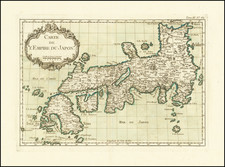
![[Illustration of Foreign Attendants] [lkoku-jin zuishin no zu]](https://storage.googleapis.com/raremaps/img/small/55556.jpg)
